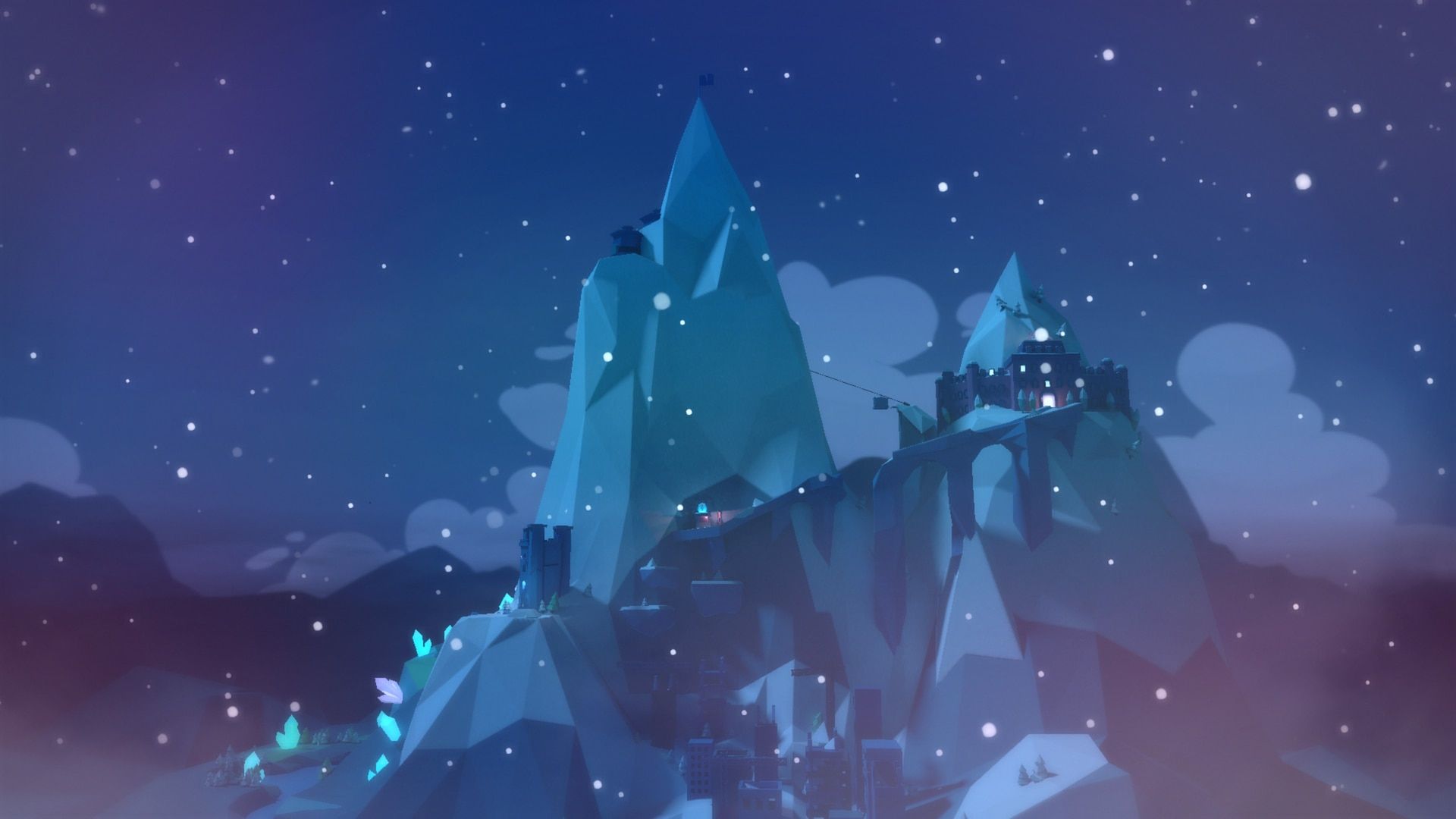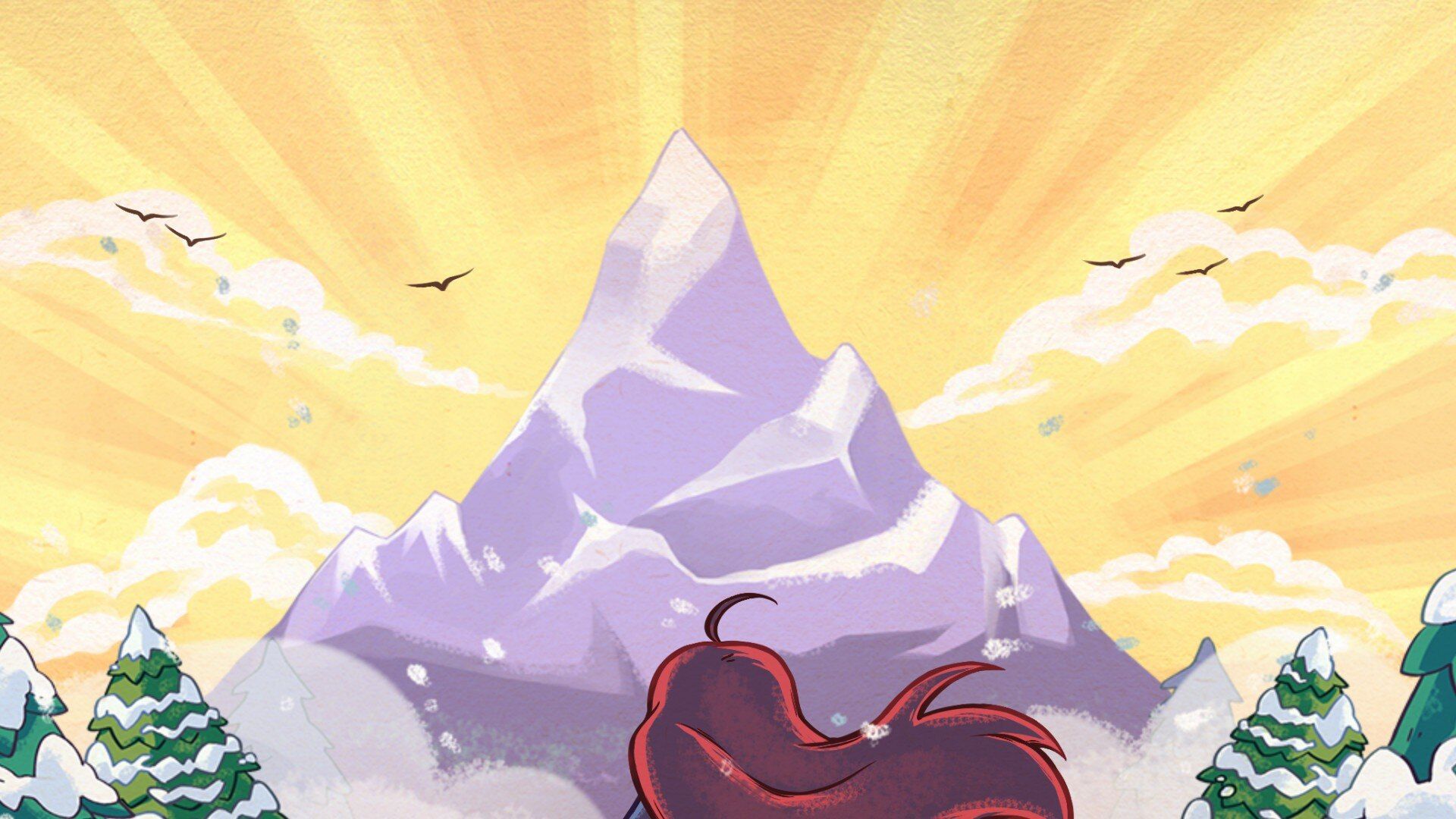Celeste: Anxiety and Synthesis
There's more to the journey than just climbing

"Whoever has learned to be anxious in the right way, has learned the ultimate."
- Soren Kierkegaard
"Great things are done when men and mountains meet."
- William Blake
It is said there is no greater challenge than overcoming oneself. For some, this is a lifelong battle. Others choose to ignore it; blaming others, making excuses, or diving into a myriad of distractions, avoiding the proverbial mirrors. As Seneca said: "For love of bustle is not industry - it is only the restlessness of a hunted mind". But in this struggle, there is no other pursuit more worthwhile. Peace and happiness are paramount. Avoiding fear only strengthens it. What we suppress only grows.
The story of Celeste is one of overcoming the self - of dealing with anxiety and doubt - and it uses a narrative about climbing a mountain merged with oppressive platforming to deliver it.
The protagonist, Madeline, is an anxious girl, wracked with insecurity and doubts, plagued by panic attacks and negative thoughts. She's young and lost, but something about Celeste Mountain calls to her and she vows to herself to climb it.
"I know it sounds crazy, but I need to climb this mountain."

Mountains have long been a symbol of adversity. The image of a mountain climber brings to mind concepts of courage, struggle, discipline, and overcoming great odds. We speak of cliffs and mountains as metaphors for daunting tasks and the journey upwards in a skill or career. Narratively, a journey upwards is a clear visual of progress, representing improvement and growth. Lastly, what is a mountain but an unmovable, unshakable, monument of strength? Unphased by the fickle elements around it.
Celeste is not a story about ridding yourself of anxiety; there is no magical cure at the summit. But somewhere on the climb between rock bottom and the summit of our fears is something greater.
"You can do this."
From the very beginning of the game, it tells you to believe in yourself. Together, its challenging gameplay and story of overcoming oneself drive this point home to a summit of catharsis, both figuratively and literally.
Celeste's core gameplay involves jumping, dashing, and climbing, designed to challenge you and bring understanding to the character, whether you relate strongly to her or not. Jumping requires precision, dashing is a single use before a recharge, and climbing has a stamina limit. As these areas progress, the chains of dashes, the precise jumps, and the crumbling cliffs, all mount and mount, delivering segments that can cause moments of panic. Panic in a platformer leads to pushing the wrong buttons or the right one too early and getting yourself killed.
The key to Celeste is acknowledging the risk and fear, but instead of being overwhelmed, it asks you to literally jump into the challenge by having faith in your abilities, that you will get there and be okay, just like the anxiety we or Madeline may face in our day-to-day lives.
Celeste is not made to be oppressive, however. Despite its challenging nature, the game has no health, lives counter, or game-over state. Respawn is instantaneous, making repeated attempts quick. Every new, small section saves your progress, the long climb delivered in bite-size portions. It perfectly mimics how we tackle anything daunting or anxiety-inducing: one small step at a time. We can't improve if we aren't willing to be a novice.
"Better we raise our skill than lower the climb."
- Royal Robbins
The game even encourages this mindset with a message: "Be proud of your Death Count! The more you die, the more you learn. Keep going!"
This gameplay conceit galvanizes and unites the player's and Madeline's goals. She doesn't have to climb this mountain. You don't have to finish this game. You and Madeline both keep going for the same reasons.
"Because it is there."
- George Mallory
The only way we can tackle this literal mountain is to overcome the internal mountain.
Celeste presents itself and this message using the structure of thesis, antithesis, and synthesis. This psychological triad is described as having a proposition, an opposite reaction, and finally, a reconciling of the pair's common truths forming a new proposition and resolution. In a three-act story structure, it could look something like this:
- Thesis: Enter a flawed character.
- Antithesis: Confront them with their opposite.
- Synthesis: Synthesize the two to solve the conflict and achieve balance.
Celeste takes a therapy model and merges it with traditional story beats to create not only a masterful platformer but one incredible, cathartic story.
Thesis & Antithesis
"This is it, Madeline. Just breathe. Why are you so nervous?" she asks herself as she arrives at the base of Celeste Mountain.

The climb begins well enough; some simple jumps introduce the player to the controls. She meets a young man named Theo, who is also attempting the climb, and an old woman, who lives at the base of the mountain.
"You should know, Celeste Mountain is a strange place. You might see things. Things you ain't ready to see," says the old woman, hinting at the more mystical element of the mountain. Madeline seems unphased; she carries an air of enthusiasm as she makes her way up this early stage. However, by the end of this first chapter, as she sits by her campfire, she voices her ever-present doubt.
"This might have been a mistake."
In her dreams, she wanders some ruins on the mountain and finds a mirror with a shadowy reflection of her.
Swiss Psychiatrist Carl Jung described a part of the psyche as "The Shadow", which is the repressed undesirable traits of our personality and character that don't align with our ideal version of ourselves or society's version of what we ought to be. However, repressed traits only grow stronger; unconscious motives often overrule our conscious decisions.
Carl Jung said: "Everyone carries a shadow, and the less it is embodied in the individual’s conscious life, the blacker and denser it is."
These are not necessarily negative traits, such as the capacity to commit violence, they can also be a specific career, hobby, or sexual orientation that one knows their parents or culture won't approve of. They are not dark by nature, they are in the dark because we put them there.
Some negative thoughts and fears are even beneficial. They are what stop us from running into traffic.
Jung believed that if one accepted one's shadow and integrated it into their personality more effectively, then one was less likely to lose control. If these aspects of us are continuously repressed, they will bubble, burst, and even take on a life of their own.
In the mirror, Madeline's dark reflection breaks out. This is her shadow-self, known as "Part of You" in the game but also "Badeline" internally. Badeline is symbolically depicted as a dark, shadowy version of Madeline. While Madeline has red hair and wears a bright blue coat, Badeline has purple hair, red eyes, pale skin, and wears dark clothes.
The words that drip from her mouth are always doubtful but spoken as if tough love.
"I'm simply a concerned observer."
"You are many things, darling, but you are not a mountain climber."
"You can't handle this."
Her dream becomes a chase sequence. Madeline runs from Badeline, just as she always runs from her negative thoughts. Throughout the story, she is a lingering presence. Madeline is scared of her, mad at her, and repulsed by her. Badeline will say what Madeline is thinking; like tearing down the hotel owner, Mr. Oshiro, whom Madeline becomes delayed by due to her people-pleasing tendency. Madeline repeatedly tells her off, asking why she can't just go away and leave her alone. Badeline insists she is just being pragmatic and has their best interest at heart. This is because at the core of anxiety is safety.
The human brain is not a happiness machine, it is a safety machine. A man sits cooped up with social anxiety, feeling isolated, wishing he could ask out the girl he likes, and go to his friend's birthday party. Yet when asked, he turns it down. He knows it is what he wants, what he should do, but still, he says no. When given a choice, the brain will gravitate towards safety. Every time.
Madeline wants to improve herself but Badeline wants to keep her safe. Stagnant.
"I've done a lot of thinking about fear. For me the crucial question is not how to climb without fear - that's impossible - but how to deal with it when it creeps into your nerve endings."
- Alex Honnold
On a precarious, stuck gondola, Madeline begins to have a panic attack. Theo shows her a breathing technique and grounding method. She envisions a feather floating in front of her, rising and falling with each breath. The player aids in controlling this with Madeline. Some fans who have panic attacks have shared that they learned this method from Celeste, and it has helped them greatly.
Theo says: “This Part of You that’s haunting you, maybe she comes with the territory…Maybe she thinks she is protecting you. She could be some kind of…twisted defense mechanism…Maybe you can learn to control her instead of her controlling you.”
Later, Madeline confronts Badeline, emboldened by her progress. She says: "You're everything I need to leave behind... I'm setting you free. I don't need you anymore. We'll both be so much happier."
Badeline lashes out, calling her stupid for thinking she can just leave her behind. The panic sets in and Madeline tries to use the feather, but the player can't even help. The feather is destroyed. It fails because it was never a solution to every bad thought, it was just an aid. She is still not facing the real issue.
Madeline plummets down the mountain, past all the progress you and her made together to her lowest point, both psychically and mentally. Rock Bottom.
"Still think you can climb this mountain?"
Synthesis
"Celeste Mountain is a place of healing."
- Old Woman

It takes falling down and a heart-to-heart with the old woman for Madeline to see the truth of things. The mountain shows your inner nature whether you are ready or not. Madeline could not climb the literal mountain because she hadn't climbed her internal one. You have to accept yourself, in order to grow into the best version of yourself, and that's what Madeline decides to do.
In one final confrontation, Madeline and Badeline decide to work as one.
The last act of Celeste is defined by its weightlessness. The climbing becomes much less grounded in nature. Madeline's synthesis with Badeline is reflected in the gameplay mechanics, such as a second dash, signified by pink hair, a merging of her red hair with Badeline's purple. The feather is prevalent as a mechanic of covering great distances and at the end of each section, reaching Badeline sees the two of them launch in the air upwards, soaring past large stretches.
There is a Taoist concept of the sage that rode the wind. We "ride the wind" when external circumstances are not weighing us down, when we are not anxiously trying to control the uncontrollable.
Alan Watts said: "What is this, then; this weightlessness? It means, partly, that you're not moving around in constant opposition to yourself. Most people move in constant opposition to themselves because they are afraid that if they don't oppose themselves all the time, something awful will happen."
That's exactly the nature of anxiety and Badeline.
While Madeline fell down the mountain, the remainder of the game is not some long trek of retracing your steps. What follows is a series of areas - microcosms of past levels - like a cassette of greatest hits. With your experience and newfound abilities, working your way back up becomes brisk. It shows us that healing and progress are not linear and that when we fall, it doesn't mean that everything before was for nothing or is erased.
These areas are punctuated by conversations between the two. Badeline starts out being hesitant towards the climb and Madeline's positivity but grows more confident. Later there is even a moment where Badeline encourages Madeline. They are now having a dialogue and working through doubts as one.
"I'm just waiting for something to go wrong."
"No matter what happens I'll be right there with you."
"You know what's really scary? I'm starting to believe you."
"I wish I tried to understand you sooner. I was too proud, or stubborn, or something."
"What if we don't make it?"
"I'd be okay with that. I'm just glad we're trying."
But they do make it to the summit. It's a moment that could be loud and celebratory but instead is quiet and cathartic. After all, once you make it to the summit of a mountain, you have to come back down from it and move on. We don't climb a mountain to plant the flag, we climb it for the journey and the growth that the summit represents. It's that climb that Celeste is about.
"It's not the mountain we conquer, but ourselves."
- Sir Edmund Hillary
What the climb gave Madeline is twofold. She learned that she is capable of incredible feats if she puts her mind to it and that sometimes you need to accept the negative thoughts and know when not to listen. The summit is about what Madeline will do going forward. Once she comes down from the mountain, Badeline won't be corporeal anymore, she will just be the thoughts in the back of her head. But now she knows them intimately, and together as one, they can accomplish anything.
They have reached synthesis.
Celeste shows us what we can achieve when we set our minds to something. When you work with yourself and not against. After all, both you and her made it to that summit, one step at a time. No matter an individual's struggle or experience, the player comes out of the experience of Celeste, a little stronger.
And when a stormy day comes, you will start riding the wind.
That's the only way to climb that mountain.
